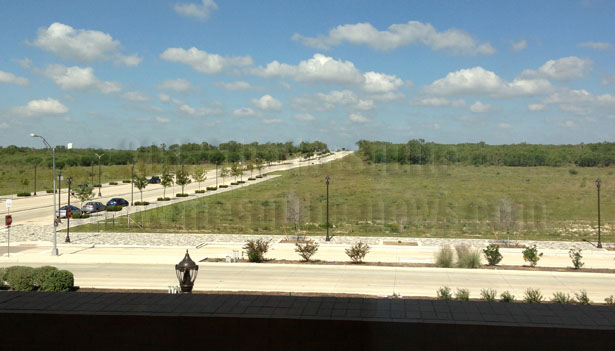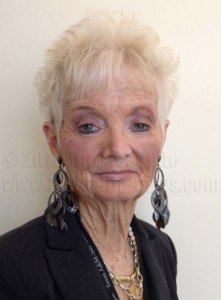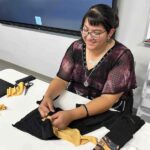
By Melody Mendoza
A local developer is planning to offer university housing near Texas A&M-San Antonio. When shown the initial plans, most students agree that the housing complex will offer future students a convenient option to live near the university located at Zarzamora Street and Loop 410.
The project, under development by NRP Group, will offer students and employees 236 units with costs ranging from $625 for a 1-bedroom, $1,081 for a 2-bedroom and $1,527 for a 3-bedroom unit. The complex is expected to open summer 2014. Read more
The housing complex is one of three projects in the first phase of development on land owned by Verano Land Group, which donated 694 acres in 2007 to A&M-San Antonio. The institution is expected to expand and potentially build out to become the second largest member of The Texas A&M System.
Verano’s 2,500-acre master plan encompassing the university is designated to be a walkable mixed-use community of three villages, a town center, proposed commuter rail station, retail, office buildings and sports and entertainment facilities, according to Verano’s website.
Verano has a long-term partnership with the university that “will facilitate development of an expansive campus to house over 25,000 students and 2,500 faculty and staff, as well as the development of a robust mixed-used development,” according to the website.
The area is expected to develop as the university grows. View the recently revised university masterplan, prodced by Alamo Architects.
A&M-San Antonio is a 2-year junior and senior level institution where students commute and many work full time and have families. The university plans to downward expand with specific programs, and will become a 4-year university after certain milestones are met, including accreditation.
Twelve junior- and senior-level students and two employees were asked to respond to housing details. Students conversing in the cafeteria at Main Campus Building and studying in the computer lab at Brooks City-Base Campus recited a similar response: they will likely graduate before the housing is available. However, they offered feedback on proposed housing.
Almost all of the students said the housing option would be beneficial to future students. But others, some non-traditional students, said they would not consider moving because they live rent-free, are homeowners, have a family or already live near the university.
Developers hope to attract the majority of students and employees who live in other areas of the city, distant from A&M-San Antonio’s location on the city’s South Side.
Only two of the 12 students interviewed said they live near Main Campus, which reflects the data reported on The Mesquite that showed only 825 of the 4,100 students live on the South Side.
The remaining 10 students live on the North Side and said it would be convenient to live near school. Some, including two international students, said the housing option would be beneficial for international students.

University employees Margaret A. Garcia, graduate recruiter specialist for School of Education, and math Professor John G. Romo noted it may be more difficult for developers to attract faculty and staff without surrounding development.
Garcia said she lived in her dream home near North Loop 1604 but moved to a condo near Alamo Quarry Market when her children were grown and began their own families. There, she said she can walk downstairs to the grocery store and conveniently get her nails done nearby.
She said faculty and staff would not move closer to the university if that means they will have to travel 10 miles to a grocery store.
Future residents would have to travel about 5 miles to the nearest Sam’s Club or HEB on Southwest Military Drive until surrounding development is constructed at Verano.
Although Garcia said the pricing of the university housing option is reasonable compared to the condo she lives in, she said she doesn’t think students with a family would be able to afford the $1,500 three-bedroom option.
Romo agreed. He said he would not consider moving near the university right now because there are no structures nearby. He added that he wouldn’t want to live in an area that is isolated.
Students weigh price, location of university housing
Although a sample of the university’s diverse student body agrees that the housing option is a reasonable price for living, the housing still may not appeal to all students.
Sitting in a group studying at Brooks Campus Oct. 30, international business management seniors Cinthia Martinez, Ali Mukhidov and Caroline Hernandez discussed the housing option.
Martinez, who lives by North Star Mall, said the prices were reasonable but she would not move because she is able to live for free with her parents.

Mukhidov said the $1,081 2-bedroom option was expensive compared to the $900 he pays with his roommate for an apartment on Interstate 10 and Callaghan Road.
He also said he only has class two days out of the week, therefore, wouldn’t consider moving closer to campus.
For Hernandez, an international student from Laredo, Mexico, a housing option would be useful for her and other international students. She said when she first came to San Antonio, she didn’t know her way around the city.
She said she lives with her sister near Loop 1604 and Interstate 10, and said the prices for the housing are reasonable compared to what her friends pay near UTSA.
Joe De La Rosa, Master’s of Business Administration student, and Joshua Diaz, a Master’s of Business Administration in finance student, said having housing near Main Campus would be convenient.
A former resident of the South Side, De La Rosa said this is an awesome option for students who could to live and work around school.
He questioned whether single residents would be willing to live near people with children and added that a resident with kids probably wouldn’t to move into the apartments.
Diaz agreed, adding that it wouldn’t be attractive to older students.

Other students at Main Campus discussed the housing option with different concerns and suggestions.
Criminology junior Colton Wallace said it would be very convenient to live near Main Campus because his commute is 40 minutes.
He said the housing option will suit the university better if there were freshmen and sophomores.
Wallace also said amenities will be an added incentive for students considering the move. He said if there is a pool, students will want to move there.
Criminology senior Tim Smith said the pricing was reasonable compared to a $600 studio space located near the football stadium at A&M-College Station. He said his younger son went to a soccer camp at the flagship campus and stayed in a studio that included a bunk bed and one bathroom.
Although he is a resident of Bulverde and commutes 30 to 40 minutes to Main Campus, Smith said he wouldn’t consider moving closer to the institution he attends.

Special education senior Alma Strelnikova said personally, she would not be interested in moving because she is a homeowner with kids and a family.
As a parent, she said she would be concerned with having to pay a separate bill for housing and tuition.
Aside from her concern, she said, “I think it’d be great once we’re a 4-year university.”
Other students said they wouldn’t consider moving because they already live near campus.
Computer science junior Donald Carpenter said the housing complex seems like a good idea, but said he wouldn’t consider moving because he already lives near Main Campus and still lives with family.
“It wouldn’t be a huge draw for me,” he said, “but it would spark interest in the area.”
Carpenter said if students are on a stressed budget, the pricing may be difficult to pay.
Similarly, bilingual education senior Gabriela Barrera said housing near Main Campus is a good option especially for students who live out of town. But she said she would not consider moving because she lives with family 10 miles away.
“It’s a good way to bring more students,” she said.





